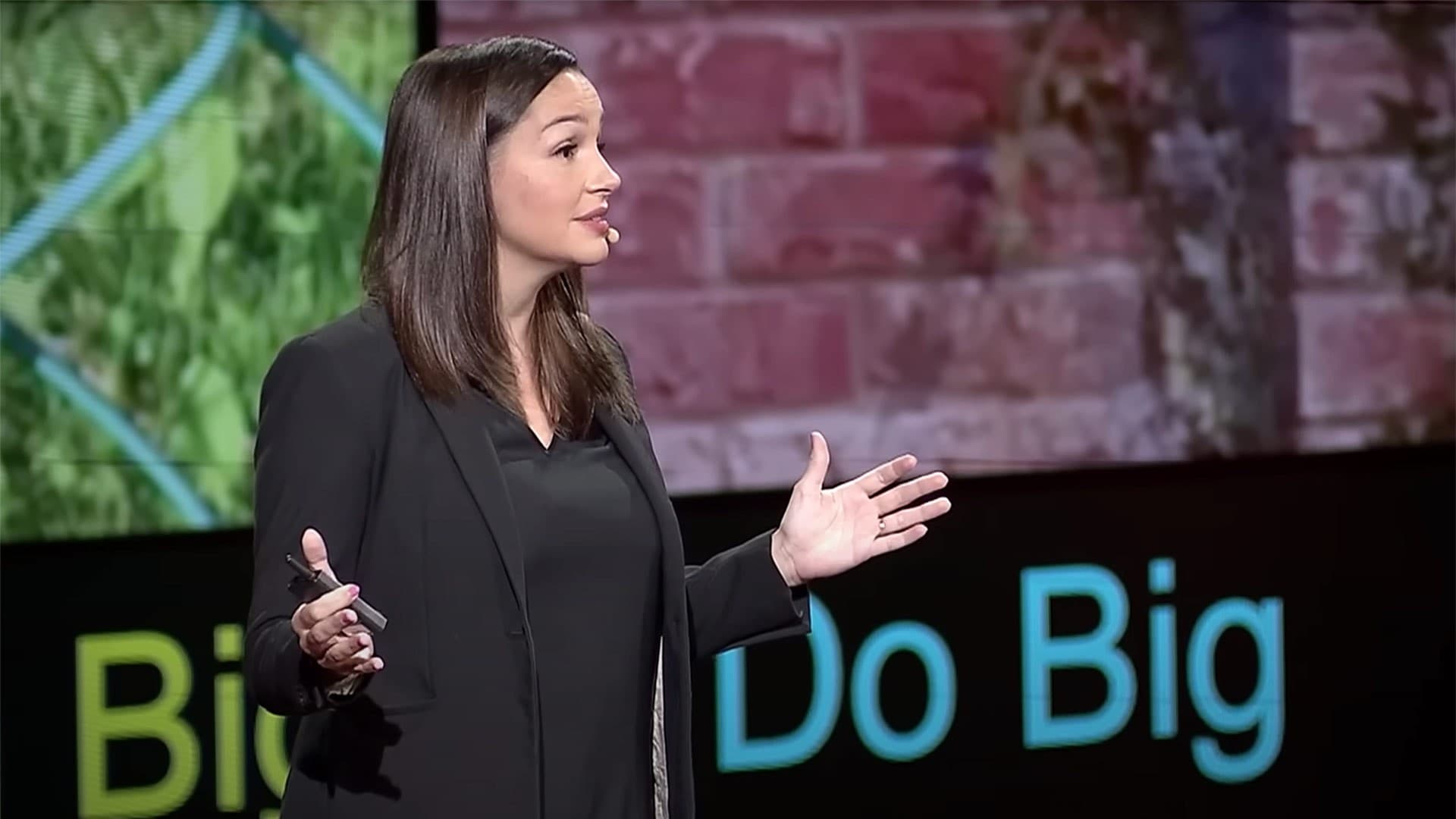From ‘Sesame Street’ to the Stars Above
Alum Brings Breathtaking Images From James Webb Space Telescope to the Public

Alex Lockwood '07 recently gave a popular TedX talk, "Think Bigger: The James Webb Space Telescope," which was featured on the Ted.com homepage. She leads outreach and communications at the Space Telescope Science Institute in Baltimore, which handles Webb's science and flight operations.
Screen grab from TedX talk YouTube video
What connects Elmo and Big Bird to the recently spotted rings of Neptune, or new views of haunting deep-space region of star birth known as the Pillars of Creation?
Most of us might be befuddled, but the connection was obvious for Alex Lockwood ’07, mom of two under 2 and project scientist for the James Webb Space Telescope: The “Sesame Street” characters teach children to approach the world with a sense of wonder and exploration, while the new telescope providing stunning views from around the universe is a triumphant example of what happens when we grow up and do just that.
Her recent TedX talk in Kansas City, “Think Bigger: The James Webb Space Telescope,” delved into that link. It was recently featured on the homepage of Ted.com, garnering more than 70,000 views and becoming one of the top 10 most-watched TedX videos in October.
“Usually, the government is cautious. But Webb was anything but. The fact that the government funded something so audacious is exciting,” Lockwood said, reflecting on her talk. “It’s really important for our society to know we should go big.”
NASA’s Webb is the most powerful telescope ever launched into space, and it’s able to “see” objects up to 100 times fainter than the Hubble Space Telescope. It detects primarily infrared light, rather than optical and ultraviolet like Hubble, which allows Webb to better peer through the haze of gas and dust that forms new stars trillions of miles from Earth.
[UMD Astronomer Helps Uncover Clues to Formation of Universe’s Early Galaxies]
Lockwood leads outreach and communications at the Space Telescope Science Institute (STScI) in Baltimore, which is responsible for Webb’s science and flight operations. (Webb project management is handled at NASA Goddard Space Flight Center, with the help of many Terps.)
“At my interview, they asked me, ‘How are you going to make Webb a household name like Hubble?’” she said. “Five years later, I feel like we’re getting there.”
Her nuanced understanding of the telescope’s capabilities—Lockwood holds a Ph.D. in planetary astronomy and science from Caltech and double-majored in astronomy and physics at UMD—means she’s able to work with researchers to synthesize the massive amounts of data and imagery STScI receives from Webb, and select the most engaging, as well as scientifically significant, findings to share with the public.
The first images released in July had to showcase all four scientific instruments on the telescope and the four key science topics it was designed to explore: the early universe; the growth and evolution of galaxies; star and planet formation; and exoplanets. It took months of planning after the Christmas Day 2021 launch to decide what to share with the public—and then six days before the big reveal, she and her team had to scramble to accommodate a new request.
“I was at the grocery store just looking around, when I literally got a call that the president wanted to release images,” she said.
President Joe Biden ended up unveiling the first Webb photo on July 11: a twinkling image of a “deep field” featuring thousands of galaxies stretching through time and space back almost to the Big Bang, and including the faintest objects ever observed with infrared.
[Terps’ Work Helped Create First Images From Webb Space Telescope]
Now, as Webb approaches its first anniversary in space, Lockwood is particularly excited to learn more about planet formation, because the telescope can examine both stellar nurseries and exoplanets in greater depth and detail than its predecessors. In addition, she’s eager for the day that scientists spot the first galaxies to form in the ancient universe.
“James Webb should definitely be a point of pride for the University of Maryland,” said Lockwood. “I’ve done my part in getting the public excited, and now the scientific community will run with it and take advantage of all its capabilities.”